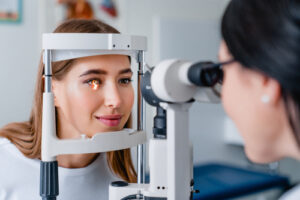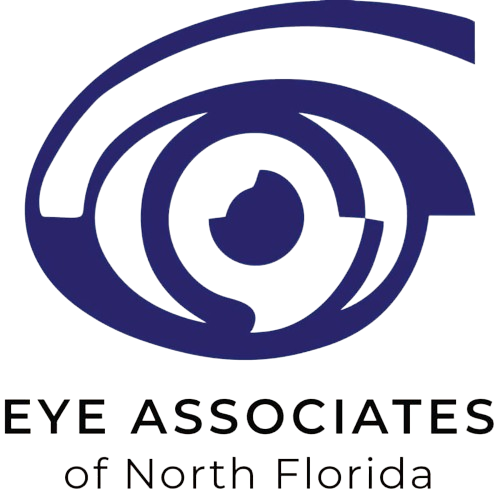How Do Eye Doctors Treat Dry Eye Syndrome?

Do your eyes lack the proper moisture? When your eyes are dry, it can affect you in a variety of ways.
If you’re experiencing symptoms like an itchy or burning sensation, light sensitivity, and blurry vision, dry eye is often the culprit. More than sixteen million Americans have dry eye syndrome, but that doesn’t mean they’re all stuck living with daily discomfort.
A range of effective treatments can restore moisture to your eyes and alleviate frustrating symptoms, so you can get back to focusing on what’s important to you. Keep reading to find out how eye doctors treat dry eye syndrome!
What Is Dry Eye Syndrome?
Dry eye syndrome results from insufficient moisture in the eye. Tears provide moisture.
Sometimes, a shortage of tears can lead to dry eye. However, more often, tears can be of poor quality and unable to lubricate the eye properly.

The most significant cause of dry eye syndrome has to do with tears missing a necessary component. In addition to water, a healthy tear has two other layers: oil and mucous.
Each component plays an essential role in lubrication. The oily layer is produced by the meibomian glands.
These are small glands that are located at the edge of your eyelids. For more than eighty-six percent of dry eye patients, symptoms arise because the meibomian glands become blocked.
This is called meibomian gland dysfunction (MGD). When this happens, oil production is affected.
Without the oily layer, tears are unable to stay in the eye for as long as they should. They evaporate too quickly. As a result, the eyes do not have enough moisture.
Dry eye can occur only in certain situations, such as dusty or windy environments, or it can be chronic. Some factors make you more likely to develop dry eye.
These include aging, certain medical conditions, such as Sjogren’s syndrome and thyroid disorders, certain medications, such as antihistamines, and long-term use of contact lenses.
What Are the Common Symptoms of Dry Eye?
You may think of dry eye symptoms as simply dryness, but this condition can affect you in more ways than one. When your eyes are dry, it can cause a variety of symptoms, some of which you may find unexpected.

Symptoms of dry eye include:
- An itchy, burning, or stinging sensation
- A gritty or foreign-body sensation
- Stringy mucus in the eye area
- Redness
- Light sensitivity
- Blurry vision
- Trouble wearing contact lenses
- Eye strain or fatigue
- Excessive tearing
Many patients are surprised to learn that excessive tearing can be a dry eye symptom. While it may sound like the opposite of dryness, watery eyes can actually be an indicator of dry eye syndrome.
When your eyes are too dry, it can lead to irritation. Your eyes try to alleviate this irritation by producing an excess of tears.
How Is Dry Eye Diagnosed?

As one of the most common conditions affecting the eyes, diagnosing dry eye is simple. Our eye doctors have seen many patients with dry eye and are very experienced in identifying whether dryness is the cause of your symptoms.
If you’re concerned that you may have dry eyes, schedule an eye exam. Your eye doctor at Eye Associates of Tallahassee will review your medical history and talk to you about what you’re experiencing.
They will closely examine your eyes, including the eyelids and corneas. They may measure the quantity and quality of your tears to check that they are providing adequate moisture.
Through a comprehensive examination, your eye doctor can determine whether you are experiencing dry eye syndrome and then discuss what steps can be taken to get you feeling well again.
How Do Eye Doctors Treat Dry Eye
With so many effective treatments available, there is no reason to endure the bothersome effects of dry eye on your own. The goal of treatment is to restore moisture to the eyes.
For milder cases of dry eye, eye drops, often referred to as artificial tears, may be all that is needed for you to feel better. You can easily find a range of options over the counter.

Prescription eye drops that increase tear production may be recommended by your eye doctor as well. If MGD is causing dry eye symptoms, a brief, non-surgical, and FDA-approved procedure called LipiFlow can provide a great deal of relief.
It works by heating and gently messaging the eyelid area, unclogging the blocked meibomian glands. Once they are able to start functioning again, healthy tear production can resume, and your eyes can retain more moisture.
This procedure is painless and quick, only taking about ten minutes to complete. The majority of Lipiflow patients begin to see improvement within a couple weeks.
Some patients experience optimal relief with repeat treatments every year or two. Your eye doctor may also recommend a clinically-tested nutritional supplement called HydroEye.
It contains omega-6 and omega-3 fatty acids, both of which support healthy, moisturized eyes. If other treatments are ineffective, your eye doctor may talk to you about blocking or closing your tear ducts so that tears can remain in the eye for longer.
Small plugs can be inserted, or the tear ducts can be closed surgically.
Is it time to treat your dry eye symptoms and start feeling better? Schedule an appointment at Eye Associates of Tallahassee in Tallahassee, FL, today!







